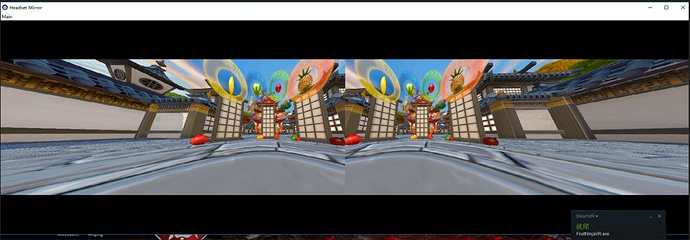I look around quite a lot playing elite tbh, I’m not sure I will enjoy fixed foveated rendering, fingers crossed.
I do agree, if that really is how it works, but this is basically what you had/have to do for other headsets anyway due to the narrow FOV. Foveated rendering of any kind will never be quite as good as rendering the whole view without it (apart from for smoothness of movement due to lower GPU demand).
Does mean you’d need to get used to using the headset in a certain way
It depends. While lowering game CPU demand by halving fps it too need some CPU.
So maybe though I’d say no. No CPU upgrade needed.
You obviously don’t understand the problem. Due to distortion of both lenses and angle of the displays, the periphery of the vision is heavily oversampled when compared to the center. I tried my best to explain. Maybe someone else can explain it better.
Does this mean the panels will actually change their frequency in this mode, or did you mean fps instead of Hz?
In other words, the panels will still run at their original 80/90Hz, right?
Will there be a feature to reduce the panel frequence? I quite like the 80Hz of 8K, would love to enable that on the 5K to get some rendering headroom for simulators.
Well I didn’t know that, I thought the sampling was the same over the whole screen, I didn’t even know they could change sampling in just one part of the screen ![]() Learn something new every day
Learn something new every day ![]()
This does make more sense now how its still useful. So this can help by reducing how much GPU computation we do further from the centre because it does too much at the moment (due to the stretching of the pixels on the edges)
Pasted this in another thread, but pasting here also so people can see.
Look at the below Pimax mirror screen for example (from https://skarredghost.com/2017/09/22/all-need-know-pimax-8k-buy/)
See how much rendering is wasted on the sides, while the center is so small. Those side areas are the parts that will become “oversampled” like explained above.
With Fixed Foveated rendering, can reduce rendering power in those areas, and then allow to focus more rendering power to the center (by increasing overall SS value).
(I’m not sure, but if can set parallel projection to off, I think it won’t be as drastic as above image … I’m thinking above image is parallel projection on)
So is this simply regular reprojection?
This is very exciting! Two questions.
-
Does this mean that you will expand the functionality to incorporate eye tracked foveated rendering?
-
Is foveated rendering even possible on 10x series cards
Thanks for all the hard work.
can you explain that ? wheres Doc Ok when you need him?
i thought the same but while driving to work this morning with my head and focus forward I realized that even when I look to the right with my head facing forward I cannot focus what im staring at to anywhere near the level when my eyeballs are in a relaxed forward direction. I think it will be fine.
Really good news, keep the good work !!! 

@PimaxVR good news but please scrap 64hz as its of no use?! we need 60hz!
Nice stuff. Pimax you rock.
The sampling is initially the same (on the rendered image), but lenses add distortion, so the image sent to the headset is “predistorted”, so that it counteracts the lens distortion. This is called “lens matched shading” and is non-linear (different portions of the source image wind up being stretched by differing amounts). It’s worse with a wider FOV. That is why supersampling is really necessary to get a good image on a VR headset.
Right here (aka he already explained your question ![]() ).
).
FIXED FOVEATED RENDERING FOR ALL GAMES? YESSSSSSS Pimax with their black magic once again LET’S GOOOO
- The Doc Ok link explains the general problem of different sampling rates in different areas of the image due to lens distortion.
- On top of that there is the problem of the straight and angled displays of the Pimax, clearly shown in the post of glassy99. We would need curved displays to solve the issue of wasted display pixels. But with fixed foveated rendering we can at least address the waste of rendered pixels.
I strongly suspect this fixed foveated rendering is only for Pimax’s own compositor and distortion shader, and not actually for the games.
Maybe their API has been given a function that returns a density map for the connected device, that the games can use to apply things such as variable rate shading suitably, but that still leaves implementation on the shoulders of the game/engine developers; I highly doubt there is any behind-the-scenes magic that takes the rendering out of the hands of engine/HAL/Drivers, modifying their shaders, etc…
Would be delighted to be proven wrong, but…
